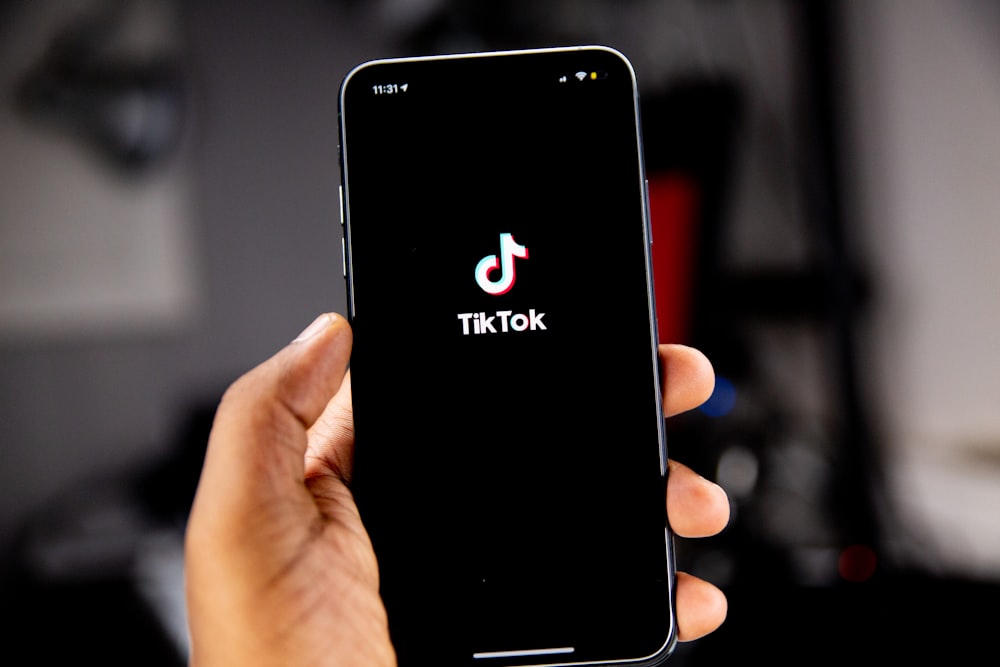TikTok, the popular short-video sharing app, has become a significant platform for brands to advertise and reach a younger audience. As with any advertising endeavor, understanding the cost of TikTok ads is crucial for businesses to make informed decisions about their marketing budgets. In this article, we will explore the various factors that contribute to the cost of TikTok ads and provide insights into the different types of TikTok advertising and marketing strategies available.
TikTok’s Formal Ads Program
TikTok was relatively slow to implement a formal advertising program, but it has now set up its own ads program, providing brands with more opportunities to advertise on the platform. Unlike Facebook and Instagram, where competition for prime advertising space can be fierce, TikTok’s ads program is still developing, offering brands the chance to gain exposure without intense competition.
Is TikTok Advertising Suitable for Your Business?
Before delving into the cost of TikTok ads, it’s essential to determine whether advertising on TikTok is suitable for your business. TikTok’s user base primarily consists of young women, with the majority falling into the 18-24 age range. If your target audience aligns with this demographic, TikTok advertising could be a valuable investment. However, if your products or services cater to older age groups, platforms like Facebook and Instagram may be more effective.
Comparing TikTok Advertising Costs
When compared to more established advertising platforms like Facebook and Instagram, TikTok ads can appear more expensive. This is partly due to the fact that TikTok ads are relatively new, allowing the platform to charge premium rates. TikTok ads typically start at $10 per 1,000 views (CPM) and require a minimum campaign spend of $500. While this may seem expensive for a viral marketing campaign, it’s important to note that TikTok ads offer unique opportunities to engage with a younger, highly active user base.
Types of TikTok Advertising and Marketing
Working with Influencers
One of the most popular ways to market on TikTok is by partnering with influencers. Collaborating with well-performing TikTok users whose follower demographics align with your target audience can be a cost-efficient way to promote your brand. By leveraging influencer marketing platforms, you can streamline the process of connecting with suitable influencers, optimizing campaigns, and tracking performance.
Promoting Your Own TikTok Channel
If your business has a young social media marketing team and aligns well with TikTok’s demographics, setting up a TikTok channel for your company can be an effective strategy. However, it’s important to note that TikTok users primarily seek entertainment and creative content, so it’s crucial to provide value to your followers and avoid overtly promotional content.
Sharing TikTok Content on Other Social Platforms
While TikTok is a standalone platform, you can extend the reach of your TikTok content by sharing it on other social media platforms such as Instagram, Facebook, and Snapchat. This allows you to leverage your existing follower base on these platforms and potentially attract new audiences to your TikTok channel.
TikTok Challenges
TikTok challenges have become a popular feature on the platform. These challenges encourage users to create and share videos based on a specific theme or concept. While successful brand-focused challenges can generate significant publicity, it can be challenging to convince skeptical TikTok users to participate in these challenges.
TikTok’s Paid Advertising Program
TikTok has recently introduced its official paid advertising program, similar to those offered by other social media platforms. The program includes different types of ads, such as in-feed ads, brand takeover ads, hashtag challenges, and branded lenses.
In-feed Ads
In-feed ads on TikTok are native ads that appear within a user’s feed, similar to ads on platforms like Instagram and Twitter. These ads can be up to 15 seconds long and offer various call-to-action options, such as app downloads and website clicks.
Brand Takeover Ads
Brand takeover ads allow a brand to take over the entire TikTok interface for a specific period. These ads can be in the form of still images, GIFs, or videos and are linked to a brand’s profile or a corresponding hashtag challenge.
Hashtag Challenges
Hashtag challenges are a popular feature on TikTok and encourage users to create content around a specific hashtag. Brands can create their own hashtag challenges and partner with influencers to increase participation and engagement.
Branded Lenses
Similar to Snapchat’s branded filters, TikTok’s branded lenses allow users to apply various filters to enhance their videos. These lenses appear in the trending section, offering brands additional exposure.
Effective Strategies for TikTok Advertising Success
TikTok’s meteoric rise as a social media powerhouse has offered brands an unprecedented opportunity to tap into a vibrant, youthful audience through creative and engaging content. However, crafting a successful TikTok advertising campaign requires more than just understanding the platform’s demographics—it demands a strategic approach, creativity, and an in-depth grasp of TikTok’s unique culture.
One fundamental strategy for TikTok advertising success is the creation of content that resonates with the platform’s user base. Unlike traditional advertising, TikTok ads should blend seamlessly with the organic content native to the platform. This means adopting a less formal, more authentic approach to video creation. Brands should focus on crafting fun, relatable, and visually appealing content that encourages user interaction and sharing. The use of popular music, trending hashtags, and engaging challenges can significantly amplify the reach and impact of your ads.
Moreover, leveraging TikTok’s algorithm by optimizing for high engagement metrics such as likes, comments, and shares is crucial. The platform rewards content that users interact with by increasing its visibility, thereby enhancing the ad’s reach. This user-driven approach makes understanding your audience’s preferences and behaviors essential. Tailoring content to match these preferences, coupled with a clear and compelling call-to-action, can drive higher engagement rates and, subsequently, better ad performance.
Collaborating with influencers is another effective strategy on TikTok. Influencers with a strong following and high engagement rates can provide a significant boost to your advertising efforts. Their endorsement can lend credibility to your brand and offer a more organic introduction of your products or services to the TikTok community. When selecting influencers, it’s vital to choose individuals whose brand and audience align closely with your own, ensuring authenticity and relevance.
Timing also plays a critical role in TikTok advertising success. Posting during peak hours when your target audience is most active increases the likelihood of higher engagement. Additionally, aligning your advertising campaigns with seasonal trends, events, or holidays can make your content more relevant and timely, further increasing its appeal to TikTok users.
Finally, continuous testing and optimization are key components of a successful TikTok advertising strategy. Experimenting with different types of content, ad formats, and targeting options allows you to understand what resonates best with your audience. Analyzing performance data and adapting your strategy based on these insights can lead to improved results over time.
In conclusion, TikTok offers a unique and dynamic platform for brands to connect with a younger audience through personalized and engaging content. By embracing the platform’s creative nature, understanding its user base, and continuously refining your approach based on performance data, your business can harness the power of TikTok advertising to achieve significant brand visibility and engagement. Remember, success on TikTok is not just about selling a product; it’s about becoming a valued and integral part of the community.
Analyzing TikTok Ad Performance
A pivotal aspect of mastering TikTok advertising lies in the meticulous analysis of ad performance. Understanding how to measure the success of your campaigns on this dynamic platform can guide strategic decisions, helping optimize your advertising efforts for better results.
Firstly, identifying the right metrics to track is crucial. Key Performance Indicators (KPIs) such as engagement rate, click-through rate (CTR), conversion rate, and the cost per action (CPA) provide valuable insights into how your audience interacts with your ads. Engagement rate reveals the level of interaction users have with your content, indicating its relevance and appeal. Meanwhile, CTR measures the effectiveness of your call-to-action, guiding potential customers from the ad to your intended destination, such as a landing page or a product checkout. Conversion rate, on the other hand, helps gauge the overall success of the campaign in achieving its goals, be it sales, sign-ups, or app downloads.
Leveraging TikTok’s analytics tools can offer a comprehensive view of your campaign’s performance. These tools allow you to track views, likes, shares, comments, and the overall reach of your ads. By analyzing these metrics, you can gain insights into what content resonates with your audience, the best times to post, and which segments of your audience are most engaged. This data is invaluable for refining your content strategy and targeting parameters to better align with your audience’s preferences.
Moreover, it’s essential to set clear, measurable objectives for each campaign before launching. Whether you aim to increase brand awareness, drive traffic to your website, or boost sales, having specific goals will help you focus your efforts and measure success more accurately. Comparing your campaign results against these objectives can provide a clear picture of what’s working and what isn’t, enabling informed adjustments to your strategy.
Continuous testing is another critical component of analyzing TikTok ad performance. Experimenting with different ad formats, creative elements, and targeting options can uncover what combinations yield the best outcomes. A/B testing, or split testing, is a particularly effective method for comparing different versions of your ads to determine which performs better in terms of engagement and conversion.
Finally, it’s important to consider the qualitative aspects of your ad performance. While metrics provide quantitative data, understanding the sentiment and feedback from your audience can offer deeper insights. Pay attention to comments and direct feedback from users, as this can highlight areas for improvement and inform future content creation.
In conclusion, analyzing TikTok ad performance is an ongoing process that requires attention to detail, a clear understanding of objectives, and a willingness to adapt based on data-driven insights. By effectively leveraging TikTok’s analytics tools, setting measurable goals, continuously testing, and listening to your audience, you can fine-tune your advertising strategy, maximizing the impact of your campaigns on this rapidly growing platform.
TikTok Advertising Best Practices
To maximize the effectiveness of your TikTok advertising campaigns, adhering to a set of best practices is essential. These guidelines can help ensure that your content resonates with the TikTok community, aligns with the platform’s dynamic nature, and ultimately drives your desired business outcomes.
Create Authentic Content: TikTok’s user base highly values authenticity. Your ads should feel like a natural part of users’ feeds, blending seamlessly with the organic content they love. Avoid overly polished or corporate videos. Instead, opt for a more relaxed, genuine approach that mirrors the spontaneous and creative spirit of TikTok.
Leverage Trending Sounds and Hashtags: Staying current with trending sounds, songs, and hashtags can significantly increase your ad’s visibility and engagement. Utilize TikTok’s Discover tab to identify trending content and incorporate these elements into your ads. This not only enhances relevancy but also increases the likelihood of users interacting with and sharing your content.
Engage with the Community: TikTok is a community-driven platform. Encourage user interaction by prompting viewers to leave comments, share their thoughts, or participate in challenges. Responding to comments on your ads can also foster a sense of connection and community, making users more likely to engage with your brand in the future.
Optimize for Mobile Viewing: Given that TikTok is a mobile-first platform, ensure your ads are optimized for mobile viewing. This includes considering the vertical video format, using clear and readable text, and ensuring that key visual elements are visible on a small screen. Also, keep your messages concise and direct to cater to the fast-paced nature of mobile content consumption.
Focus on Visual Storytelling: Utilize TikTok’s unique features, such as filters, effects, and editing tools, to tell a compelling story within your ads. Visual storytelling can capture users’ attention quickly and convey your message effectively in a short format. Aim to evoke emotions or offer value within the first few seconds to keep viewers engaged.
Target Your Ads Carefully: TikTok offers various targeting options, including age, gender, interests, location, and more. Use these tools to ensure your ads reach the most relevant audience. Regularly review and adjust your targeting settings based on campaign performance and audience engagement metrics.
Experiment and Test: Don’t be afraid to try new approaches. Experiment with different ad formats, creative styles, and messaging to see what resonates best with your target audience. Conduct A/B testing to compare different versions of your ads and identify the most effective elements.
Monitor and Adapt: Stay agile and ready to adapt your strategy based on real-time performance data and user feedback. If certain ads aren’t performing as expected, don’t hesitate to make changes. Continuously monitoring your campaigns and being open to experimentation can lead to improved results over time.
Incorporating these best practices into your TikTok advertising efforts can lead to more engaging, relevant, and effective campaigns. Remember, success on TikTok comes from understanding and embracing the platform’s unique culture and community. By creating authentic, creative content that speaks directly to your target audience, you can leverage TikTok’s immense potential to grow your brand and connect with a broad, dynamic user base.
Integrating TikTok into Your Overall Marketing Strategy
For businesses looking to harness the full potential of TikTok, integrating this dynamic platform into an overarching marketing strategy is essential. TikTok, with its unique format and highly engaged user base, offers a fresh avenue to complement and amplify your existing marketing efforts. Here’s how to seamlessly weave TikTok into your broader marketing approach:
Align TikTok Goals with Broader Business Objectives: Begin by defining clear objectives for your TikTok campaigns that align with your overall business goals. Whether it’s increasing brand awareness, driving website traffic, or boosting product sales, ensure that your TikTok efforts are directed towards achieving these broader objectives.
Leverage Cross-Platform Synergies: Utilize TikTok’s unique content and format to enrich your content strategy across other social media platforms. For instance, TikTok videos can be repurposed for Instagram Stories, Facebook posts, or even embedded in email newsletters, creating a cohesive cross-platform narrative that leverages the strengths of each medium.
Incorporate TikTok into Your Content Calendar: To maintain consistency and maximize engagement, integrate TikTok into your overall content calendar. Plan your TikTok content alongside other social media activities, ensuring a steady stream of engaging and timely content across all channels.
Use TikTok to Amplify Campaigns and Promotions: If you’re launching a new product, running a promotion, or hosting an event, use TikTok to amplify these initiatives. Creative TikTok challenges, influencer collaborations, or behind-the-scenes content can generate excitement and engagement, driving greater visibility for your campaigns.
Track and Measure Cross-Platform Impact: Implement tracking mechanisms to measure the impact of your TikTok activities on your broader marketing goals. Analyze metrics such as referral traffic from TikTok to your website, increases in brand search volume, or uplifts in sales during TikTok campaigns to gauge the platform’s contribution to your marketing success.
Foster Community Engagement Across Platforms: Encourage the community you build on TikTok to engage with your brand on other platforms. Use calls-to-action within your TikTok content to direct viewers to your Instagram, Twitter, or Facebook, creating a multi-platform community of engaged followers.
Stay Adaptive and Responsive: The digital landscape is constantly evolving, with new trends, platform updates, and audience behaviors emerging regularly. Stay adaptive in your approach, ready to tweak your TikTok strategy in response to these changes and the insights gathered from your cross-platform analytics.
By thoughtfully integrating TikTok into your overall marketing strategy, you can unlock new opportunities for engagement, reach, and brand-building. TikTok’s unique format and vibrant community offer a rich canvas for creative expression and connection, complementing and enhancing your marketing efforts across the board. Remember, the key to success lies in leveraging the strengths of each platform, including TikTok, to create a unified, compelling brand story that resonates with your audience wherever they are.
Conclusion
Understanding the cost of TikTok ads is essential for businesses looking to tap into the platform’s vast user base. While TikTok ads may seem more expensive compared to other platforms, they offer unique opportunities to engage with a younger audience. By leveraging influencer partnerships, promoting your own TikTok channel, and utilizing TikTok’s paid advertising program, you can effectively reach and connect with your target audience on TikTok.
Remember, as with any advertising strategy, it’s important to track and measure the performance of your TikTok ads to ensure they align with your marketing goals and provide a positive return on investment. With the continuous growth and evolution of TikTok, staying informed about the latest advertising trends and strategies will be key to success on the platform.
By following these guidelines and understanding the nuances of TikTok advertising, you can make informed decisions about your marketing budget and effectively reach your target audience on one of the fastest-growing social media platforms.
FAQ: Understanding TikTok Advertising Costs and Value
How much do ads cost on TikTok?
The cost of ads on TikTok can vary based on ad format, targeting, and campaign duration. On average, TikTok ads start at $10 per CPM (cost per 1,000 views). However, prices can fluctuate based on demand and specific campaign requirements.
Is TikTok paid ads worth it?
TikTok paid ads can be worth the investment for businesses looking to reach a younger audience. The platform offers unique engagement opportunities and a vast user base. The value depends on your campaign’s alignment with TikTok’s user interests and behaviors, as well as the creativity and relevance of your ads.
How much is a TikTok ad budget per day?
TikTok recommends a minimum ad budget of $50 per day for campaigns. However, the total daily budget can be adjusted based on your overall marketing objectives and the scale of your campaign.
What is the minimum budget for TikTok ads?
The minimum budget for a TikTok ad campaign is $500 overall. This allows for enough scope to analyze performance and make necessary adjustments for optimization.
How much do ads cost per 1,000 views on TikTok?
Ads on TikTok generally cost around $10 per CPM (cost per 1,000 views), although this can vary based on the ad format and competition for your target audience.
How much does TikTok pay per 1,000 views?
TikTok’s Creator Fund pays creators based on various factors, including views, but the platform does not publicly disclose a fixed rate per 1,000 views. Payments can vary widely based on engagement, content, and other factors.
Why is TikTok advertising so expensive?
TikTok advertising can be seen as expensive due to its high engagement rates, extensive reach, and the platform’s popularity, especially among younger demographics. The cost is also influenced by bidding competition for ad space and targeting specifics.
How long do TikTok ads last?
The duration of TikTok ads can vary based on the campaign settings. Advertisers can set a specific start and end date for their campaigns. Individual ad videos can range from 5 to 60 seconds, but the campaign itself can run for as long as the advertiser chooses, provided it aligns with their budget and goals.
Featured Image Credit: Photo by Solen Feyissa; Unsplash – Thank you!
















